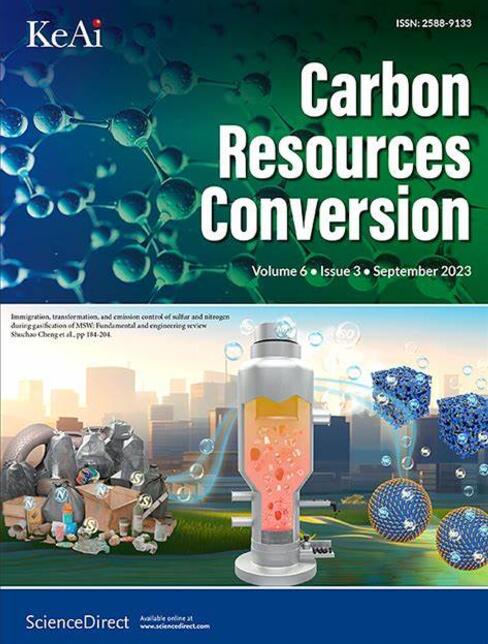酸性NiMo/TS-1晶粒尺寸对二苯并噻吩加氢脱硫性能的影响
IF 7.5
3区 环境科学与生态学
Q2 ENERGY & FUELS
引用次数: 0
摘要
通过调节模板剂用量、螯合剂用量和温度,在水热条件下制备了不同粒径的TS-1分子筛,并将其作为载体用于NiMo/TS-1催化剂的制备。通过对合成条件的优化,实现了从纳米级到微米级晶粒尺寸的可控合成。粒径较小的TS-1具有较大的比表面积、外比表面积和孔隙体积,可以有效缩短结构复杂硫化物的扩散路径。纳米级TS-1具有更多高度配位的钛种,作为电子添加剂,提高催化剂的硫化程度。纳米级NiMo/TS-1具有较高的酸性,有利于加氢脱硫(HDS)反应。在NiMo/TS-1系列催化剂中,NiMo/TS-1 (120 nm)催化剂具有最高的二苯并噻吩(DBT, 88.4%)和4,6-二甲基苯并噻吩(4,6- dmdbt, 62.1%) HDS活性。本文章由计算机程序翻译,如有差异,请以英文原文为准。

Influence of grain size of acidic NiMo/TS-1 on its catalytic performance for hydrodesulfurization of dibenzothiophenes
TS-1 zeolites with different grain sizes were prepared under hydrothermal conditions by tuning the amount of template agent, chelating agent, and temperature, which were further used as supports for the NiMo/TS-1 catalysts. The optimization of synthesis conditions has achieved controllable synthesis of grain sizes from nano-scale to micron-scale. TS-1 with smaller grain sizes possess larger specific surface area, external specific surface area, and pore volume, which can effectively shorten the diffusion path of the sulfide with complex structure. Nano-scale TS-1 has more highly-coordinated Ti species, acting as electronic additives to increase the sulfidation degree of the catalyst. Nano-scale NiMo/TS-1 exhibits higher acidity, which is beneficial for hydrodesulfurization (HDS) reactions. Among the series of NiMo/TS-1 catalysts, NiMo/TS-1 (120 nm) catalyst exhibits the highest dibenzothiophene (DBT, 88.4 %) and 4,6-dimethylbenzothiophene (4,6-DMDBT, 62.1 %) HDS activities.
求助全文
通过发布文献求助,成功后即可免费获取论文全文。
去求助
来源期刊

Carbon Resources Conversion
Materials Science-Materials Science (miscellaneous)
CiteScore
9.90
自引率
11.70%
发文量
36
审稿时长
10 weeks
期刊介绍:
Carbon Resources Conversion (CRC) publishes fundamental studies and industrial developments regarding relevant technologies aiming for the clean, efficient, value-added, and low-carbon utilization of carbon-containing resources as fuel for energy and as feedstock for materials or chemicals from, for example, fossil fuels, biomass, syngas, CO2, hydrocarbons, and organic wastes via physical, thermal, chemical, biological, and other technical methods. CRC also publishes scientific and engineering studies on resource characterization and pretreatment, carbon material innovation and production, clean technologies related to carbon resource conversion and utilization, and various process-supporting technologies, including on-line or off-line measurement and monitoring, modeling, simulations focused on safe and efficient process operation and control, and process and equipment optimization.
 求助内容:
求助内容: 应助结果提醒方式:
应助结果提醒方式:


